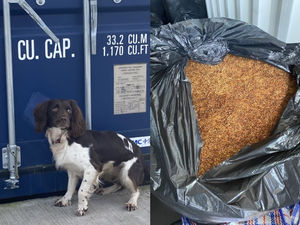The three factors the Met Office considers when forecasting snow in the UK
A Met Office video shows how the forecaster predicts when snow will fall in the UK.
Watch more of our videos on ShotsTV.com
and on Freeview 262 or Freely 565
With talk of snow hitting the UK this month, the Met Office has explained how it forecasts snow.
In a video explainer, the forecaster said: “When it comes to predicting snow, a change in temperature of just one degree can mean the difference. But this small temperature change is also determined by other factors.
“The air tends to be colder on hilltops. A village at 300 metres may be cut off by snow, whilst a neighbouring village at sea level just gets rained on. Proximity to the sea also matters for an island nation like the UK. Seas and oceans have a moderating influence on climate, keeping us milder in the winter and cooler in the summer than would be the case if we were in the middle of a continent. Sometimes, just a few miles inland from the coast can be the difference between rain and snow.
“The intensity of the precipitation – rain, sleet or snow – is crucial. Water needs energy to evaporate, which it takes from the surrounding environment. Rain evaporates as it falls and takes heat out of the atmosphere. The longer and harder it rains, the more cooling takes place. If the temperature is already close to zero, enough cooling can result in snow.
“If [snow] arrives early in the morning following a frosty night, it can settle and disrupt the rush hour. A couple of hours later, the roads may have warmed up with the snow melting on impact. And of course, when snow arrives in the form of showers, just like rain showers, these can be very hit and miss.”
The three factors the Met Office considers when forecasting snow in the UK
According to the Met Office, meteorologists consider the following when forecasting snow:
Where the air has come from
If air has come from a warmer area, or has spent a long time over mild water, then it would be harder to generate snow. If the air is coming from a cold region, then there’s a chance of snow being a possibility.
Very heavy precipitation
Most precipitation in the clouds starts off as snow or supercooled raindrops, and often melts before it comes to ground. In winter, intense precipitation can keep temperatures lower closer to the ground, increasing the chance of heavy rainfall turning into snow.
When warm air meets cold air
Presenters often talk about weather fronts between warm and cold air. In the winter, these fronts can introduce the moisture and conditions for snow to fall.





